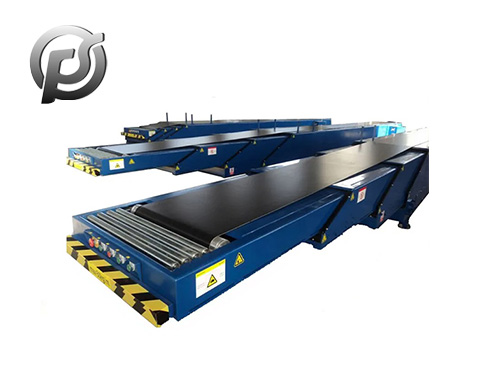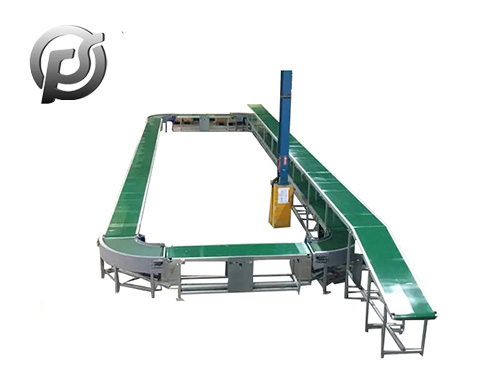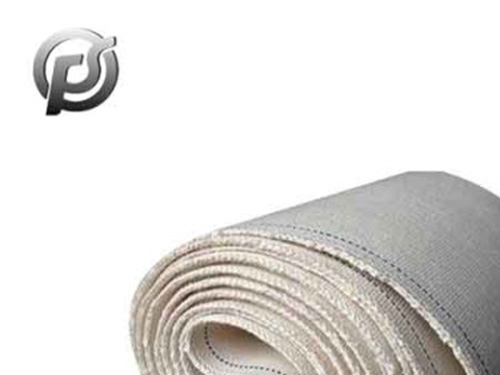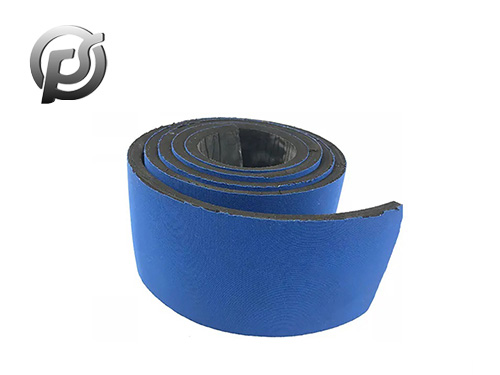The structure of light
conveyor belt and rubber conveyor belt is basically the same, but due to the large differences in the raw materials and production technology used, the performance indicators of the conveyor belt are quite different, and its application fields are also different. Compared with rubber conveyor belt, light conveyor belt in order to reduce the consumption of raw materials and save the power consumption of the conveyor belt, most of them choose environmentally friendly materials.
(1) Different application fields
Rubber conveyor belt is mainly used in heavy industry such as steel, coal, cement, port and power, while light conveyor belt can be used in light industry such as electronics industry, printing and dyeing industry, medicine industry, food processing and agricultural automation. Compared with the traditional conveyor belt, TPU conveyor belt and food-grade PVC conveyor belt are widely used in food processing, agricultural production and other industries because they meet the strict standards of EU and FDA, while TPEE and PE conveyor belts are used as the main belts in the tobacco processing industry because their surface materials meet the requirements of non-toxic combustion. On the contrary, the traditional rubber conveyor belt cannot be used in food processing and tobacco processing industries due to the reasons of raw materials and production technology.
(2) Different raw materials for production
The raw materials of light conveyor belt are PVC, TPU, TPEE, PE and other polymer materials. Due to various available formulas, the impact of raw material costs is relatively small. In addition to the good characteristics of the covering material itself, through physical and chemical modification, light conveyor belt products of new materials can be equipped with acid and alkali resistance, oil resistance and organic solvent resistance, etc., to meet the needs of diverse downstream industries.
(3) Different energy consumption
The structure of light conveyor belt and rubber conveyor belt is basically the same, but due to the large differences in the raw materials and production technology used, the performance indicators of the conveyor belt are quite different, and its application fields are also different. Compared with rubber conveyor belt, light conveyor belt in order to reduce the consumption of raw materials and save the power consumption of the conveyor belt, most of them choose environmentally friendly materials.
Why is the light conveyor belt so thin? Because its surface uses pvc, pe, some use silicone, and the skeleton uses mostly Chonglun, nylon and so on, these are originally very thin materials, naturally made conveyor belt will not be particularly thick; Heavy conveyor belt is on the surface of the use of a variety of rubber, most of the heavy conveyor belt skeleton has adopted the steel wire rope, some of the use of nylon conveyor belt, it is conceivable that the light weight of the steel wire rope has been very considerable, coupled with thick rubber, no wonder called heavy conveyor belt.
In use, because the surface material of light conveyor belt is generally non-toxic and harmless, there is no smell, it does not matter to transport food or materials that need to be in close contact with the human body. Its own thin also determines that it is suitable for the transport of relatively light and no sharp edges and corrosive materials, and the edge glue used by heavy conveyor belt will have a taste. And its thickness can support greater weight, one is used to transport ore, sand and other do not need to close contact with the human body and very heavy materials. In the pattern, the light conveyor belt has more patterns, which can adapt to different environments, while the heavy conveyor belt only has several common patterns such as herringbone, which are used to adapt to the harsh working environment.
 Custom Conveyor Belts: Enhancing Efficiency and Productivity
Custom Conveyor Belts: Enhancing Efficiency and Productivity
 Stone Belt Conveyor: Efficient Material Handling Solution for Mining and Construction
Stone Belt Conveyor: Efficient Material Handling Solution for Mining and Construction
 Exploring the Dynamics of Conveyor Belt Manufacturing in China
Exploring the Dynamics of Conveyor Belt Manufacturing in China
 PE Conveyor Belts: Characteristics, Applications, and Advantages
PE Conveyor Belts: Characteristics, Applications, and Advantages